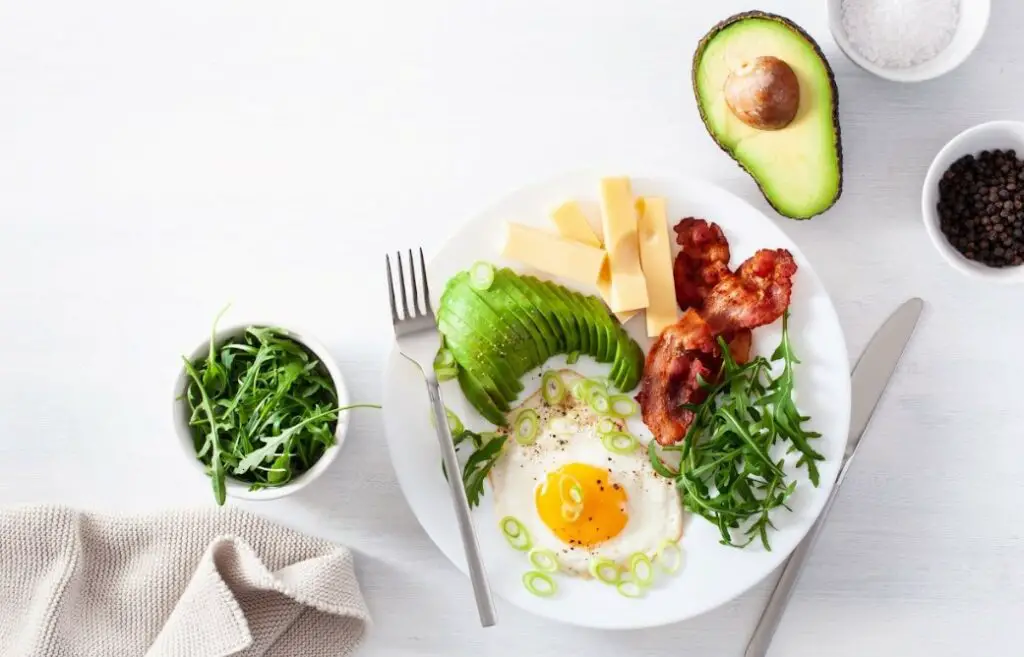Adopting a ketogenic diet represents a profound lifestyle change. This low-carbohydrate, high-fat diet pushes the body to a state of ketosis, which burns fat for energy instead of glucose.
This process offers numerous potential benefits, including weight loss, improved mental clarity, and greater energy levels. However, the transition phase, particularly the first week, can be fraught with difficulties.
Successfully navigating this initial week is crucial, as it sets the tone for an individual’s long-term adherence and success on the keto diet. Therefore, preparing for and understanding these challenges is key. This article dives deep into five primary areas of difficulty in the first week of keto and offers practical strategies to help dieters overcome them.
Understanding The Keto Flu
Transitioning into ketosis can present several challenges. One of these is the ‘keto flu,’ which refers to a range of symptoms that mirror the flu, such as headache, fatigue, nausea, dizziness, and irritability. These occur as the body adapts to the new fuel source, signifying the metabolic shift from glucose burning to fat burning.
While these symptoms may be uncomfortable, it’s essential to remember they are a normal part of the adjustment process. Effectively managing these symptoms can mitigate discomfort and enhance the transition experience.
Staying hydrated is key, as the body loses more water when entering ketosis. Consuming enough salt helps replenish electrolytes lost due to this diuresis. Ensuring adequate sleep is also crucial since restorative rest supports overall wellness and helps manage potential fatigue related to the keto flu.
It’s worth noting that the keto flu is temporary, typically subsiding within a few days to a week. As the body adapts to using fat as its primary energy source, individuals often report increased energy levels, enhanced mental clarity, and reduced hunger sensations. These positive outcomes often serve as motivation to stick with the diet beyond the initial adjustment phase.
Combating The Keto Bloat
Even though the ketogenic diet is largely recognized for its weight loss benefits, a phenomenon known as ‘keto bloat’ can occur, particularly during the initial stages of the diet. This sensation of bloating can arise due to sudden dietary changes, especially an increase in the intake of high-fiber vegetables or the inclusion of artificial sweeteners, which might cause digestive issues in some people.
To alleviate the discomfort of feeling keto bloated, drinking ample amounts of water can help by promoting healthy digestion and reducing water retention. Engaging in gentle physical activities, such as post-meal walks, can stimulate digestion and ease bloating. Limiting the intake of artificial sweeteners can also reduce their potential laxative effects and associated bloating.
Moreover, a gradual approach is recommended instead of drastically increasing the intake of high-fiber foods. This strategy allows the gut to adapt to a higher fiber load, minimizing potential digestive issues, including bloating and gas. Over time, most people’s bodies adjust to the new eating pattern, and the bloating subsides.

Managing Cravings
The first week of the ketogenic diet can be particularly tough when it comes to dealing with cravings. These cravings for high-carb foods can be intense as the body still acclimates to using fats rather than carbs as its primary energy source. Individuals are most vulnerable to temptation during this adjustment period, and yielding to these cravings can derail their ketogenic journey.
Planning can be a powerful tool for overcoming this hurdle. Having an array of keto-friendly snack options at hand can help satisfy cravings without falling off the diet. Snacks rich in healthy fats, like nuts and cheese, or those providing a touch of natural sweetness, such as high-quality dark chocolate, can be quite satisfying.
Additionally, concentrating on the consumption of nutrient-dense whole foods provides the body with the nutrients it needs for optimal functioning and can lead to a greater sense of satiety. Over time, focusing on quality, high-fat, low-carb foods can significantly reduce cravings and make adhering to the ketogenic diet much easier.
Eating Enough Fat
For those indoctrinated in the idea that dietary fat is harmful, adjusting to the high-fat nature of the ketogenic diet can be challenging. However, on a keto diet, dietary fat is the primary energy source, making it essential to consume enough to meet energy needs.
In choosing fat sources, prioritize those rich in monounsaturated and polyunsaturated fats, which provide numerous health benefits. Avocados, nuts, seeds, olive oil, and fatty fish like salmon are excellent choices that offer high-quality fats. Balancing these healthy fats with adequate protein and minimal carbohydrates is essential to maintain a state of ketosis, optimizing fat burning and the associated health benefits.
Maintaining Electrolyte Balance
The onset of the ketogenic diet often triggers diuresis, or increased water loss, which can result in the flushing out of essential electrolytes. This electrolyte imbalance can lead to symptoms such as fatigue, headache, and muscle cramping, often grouped under the umbrella term ‘keto flu.’
In counteracting this, hydration is paramount, and electrolyte replenishment is crucial. Consuming potassium, magnesium, and sodium-rich foods can help restore electrolyte balance. For example, leafy green vegetables, avocados, and nuts are rich in potassium and magnesium, while adding moderate salt to foods can provide the necessary sodium.
However, food sources alone may not suffice in some cases, making an electrolyte supplement a worthwhile consideration. Proactively maintaining electrolyte balance can better manage potential keto flu symptoms, making the initial transition into a ketogenic lifestyle more comfortable.
Conclusion
Surviving the first week of a ketogenic diet involves understanding and overcoming several challenges. These include navigating symptoms of the keto flu, dealing with keto bloating, managing cravings, and ensuring adequate fat and electrolyte intake.
With the right strategies and mindset, these initial obstacles can be successfully navigated, paving the way for a successful and sustainable ketogenic lifestyle.


